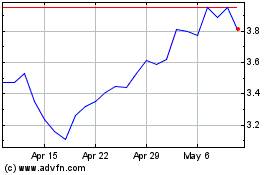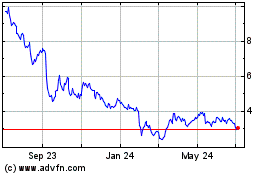Comprehensive report assesses short-, medium-, and long-term
cases for crude oil price recovery and the underlying economic
implications for petrochemicals markets
An extended recovery period for crude oil prices, exceeding five
years, would have dramatic implications for the global
petrochemical industry and could mean a “Back to the Future”
experience for some companies and regions -- creating a more
competitive environment for naphtha producers, according to a new
IHS (NYSE: IHS) report.
This Smart News Release features multimedia.
View the full release here:
http://www.businesswire.com/news/home/20150812006363/en/
The IHS Chemical Crude Oil Turmoil and the Global Impact on
Petrochemicals Special Report assesses the potential market and
economic implications of three possible, short-, medium-, and
long-term recovery trajectories for crude oil prices to help
petrochemical producers address their investment planning in the
midst of significant market volatility, and a higher degree of
uncertainty regarding the role of OPEC in managing the global
supply of crude oil.
“Oil price volatility is creating a nightmare for companies
planning investments,” said Don Bari, vice president, technology
and analytics - IHS Chemical, and an author of the report. “The
long-term recovery case, should it come to fruition, has the most
significant implications for the market. Since oil dynamics drive
marginal production cost and price-setting mechanisms for many
chemicals, plastics and fibers, a prolonged oil-price recovery
could shift the feedstock advantage from ethane and back to a more
cost-competitive naphtha. Much like the DeLorean time machine from
the 1985 film — ‘Back to the Future,’ naphtha would be the conduit
taking us ‘back to the future,’ similar to the industry experience
of the late 1980s.”
In the case of a long-term oil price recovery (exceeding five
years), IHS economists, would expect moderate economic growth to
continue for several years, along with slower oil demand growth. At
the same time, technology would continue to reduce oil production
costs and increase supply, even at lower oil prices. Long-term,
continued global oversupply of crude oil could keep prices from
recovering to trend for more than 10 years, the IHS report
said.
The outlook resulting in a longer-term oil price recovery is not
particularly rosy, and the short-term view is also complex. In the
near-term, energy experts at IHS say economic and geopolitical
risks continue to challenge oversupplied oil markets, and crude oil
prices are posed to drop further.
In an IHS Energy research note on crude oil production and
prices issued 30 July, 2015, IHS Energy researchers noted that
since the oil price collapse, global oil production has gone up,
not down. Indeed, since the fateful 27 November 2014 OPEC meeting,
aggregate production from the United States, Saudi Arabia, and Iraq
has increased 2 million barrels per day—far more than global
demand. Oil markets are increasingly glutted.
Last November is also when the United States inadvertently
became the swing oil producer. Prices have not yet fallen far
enough or for long enough for an appreciable U.S. supply adjustment
to occur. But it may not be far off, especially if oil prices fall
further with additional Iranian supplies. Oil prices will be under
downward pressure until there is evidence the glut is shrinking.
This will not happen quickly unless prices fall even further from
recent levels.
As for petrochemicals, the first major impact of a long-term oil
price recovery, Bari said, would be on natural gas liquids (NGLs)
production and ethylene production in the U.S., where prolonged
lower oil prices would slow NGLs production and ethane cracker
capacity expansions, potentially creating a tight market. Ethylene
is the basic building block for many downstream chemicals, plastics
and synthetic fibers, and as such, is the largest volume, and
perhaps most market-indicative petrochemical. A tighter ethylene
market would not only push operating rates higher, but would also
cause prices to increase and introduce more market volatility.
Said Bari, “Ethylene cracker operating rates would be driven to
near-record highs, since the second wave of ethylene capacity
additions wouldn’t come online until 2025, and global ethylene
demand growth will be strong. According to our IHS analysis, in the
long-term recovery case, ethylene demand is forecast to grow at an
annual rate of 4.5 percent and nearly 4 percent during 2015-2020
and 2020-2025, respectively, while the nameplate capacity is
forecast to grow at an annual rate of more than 3 percent and less
than 1 percent respectively, during the corresponding time periods.
In the long-term recovery case, ethylene demand grows at a higher
pace than supply during the 2015 to 2020 timeframe, which will lead
to severe supply shortages similar to late 1980’s.”
A second macro trend would be seen in Europe and Asia. With
naphtha back in economic favor as a cost-competitive feedstock, the
regions’ petrochemical producers would be the winners, with their
naphtha crackers running at high rates, and margins back in
positive territory. In response, more naphtha-based crackers would
be built in China, and other emerging countries building a
petrochemical base.
Since more ethylene production from naphtha yields more
co-production of propylene and butadiene, global on-purpose
producers of propylene would see their profits erode quickly as
conventional production is able to meet market demand reducing the
need for higher-cost production options.
“One of the most intriguing revelations from our IHS long-term
price recovery analysis was the impact on the plastics industry,
particularly plastics demand and the implications for plastics
recycling,” Bari said. “We found that low oil prices stimulate
demand for virgin plastics by reducing economic incentives to
recycle plastics. As less plastic is recycled, demand for ethylene
further increases, which leads to more co-product production of
propylene and butadiene.”
A prolonged oil price recovery would also dramatically impact
future investment plans as chemical producers adjust to the
shifting feedstock dynamics. In North America, U.S. ethane would
remain “stranded,” and advantaged in the long-term as oil prices
cycle and necessary LNG and ethane export and shipping
infrastructure is added, said IHS, which also covers the global
shipping trade through IHS Maritime. China coal, however, is an
inland “stranded” feedstock, and in a long-term recovery case, coal
and methanol routes would lose most of their advantage, as low oil
prices will keep naphtha prices depressed, and coal prices are
already near breakeven levels needed to overcome high investment
costs. The tighter spread between oil and coal would cause
coal-based petrochemical investments to lose favor in China.
As for the methanol value chain, in a long-term recovery case,
methanol projects with advantaged feedstocks, such as in North
America and the Middle East, would fare better than higher-cost,
coal-based units in China. Methanol projects targeting energy
applications, such as gasoline and DME, would also be the losers in
this outcome, along with North American methanol projects targeting
methanol-to-olefins (MTO) and methanol-to-propylene (MTP). While
methanol capacity additions will still occur in locations with
advantaged feedstocks, the speed of these additions would be
significantly delayed and rationalizations also would be
likely.
A long-term oil price recovery would also have a profound impact
on both global polyethylene and polypropylene markets. In this
case, said IHS, polyethylene production rates would grow as global
demand expands by more than 54 MMT during the study period 2014 to
2025, due to a higher GDP, better price competitiveness displacing
conventional materials such as metal, paper and glass, and the
aforementioned replacement of recycled material by virgin material.
Western Europe and Asia would benefit greatly from more competitive
feedstock and buoyant demand, while North America would experience
lower integrated margins.
A prolonged period of low oil prices would put new Russian
polyethylene projects in jeopardy because of the poor investment
climate, leaving Russia as a net–importer of the chemical. The
changes in the global oil market due to persistent low prices would
continue to impact regional capacity additions, creating
significant implications for global petrochemical producers and
maritime operations, the IHS report said.
The winners in this view would be European and Asian
naphtha-based producers due to their conventional cracker
investments. South American polyethylene projects also would move
forward and additional Asian capacity would come online. North
America would be the losers in this equation, the IHS report noted,
since the North American export position would be negatively
impacted as its economic advantage shrinks.
While the implications for the chlor-alkali and vinyls chains
under the long-term oil price recovery are not as severe as for
other chemicals, a low oil price through 2017 or later would likely
drive a break-even point between acetylene-based polyvinyl chloride
(PVC) and ethylene-based PVC. If this ratio between oil and coal is
reached, IHS said, it may be an opportunity for Asian producers to
develop more ethylene-based PVC. Under the long-term oil price
recovery, IHS expects that North America ethylene-based PVC
producer margins will shrink, whereas naphtha-based Western
European PVC producers’ margins will improve.
To speak with Don Bari, please contact Melissa Manning at
melissa.manning@ihs.com. For more information on the IHS Chemical
Crude Oil Turmoil Report, please visit www.ihs.com/CrudeOil.
About IHS
(www.ihs.com)
IHS (NYSE: IHS) is the leading source of insight, analytics and
expertise in critical areas that shape today’s business landscape.
Businesses and governments in more than 150 countries around the
globe rely on the comprehensive content, expert independent
analysis and flexible delivery methods of IHS to make high-impact
decisions and develop strategies with speed and confidence. IHS has
been in business since 1959 and became a publicly traded company on
the New York Stock Exchange in 2005. Headquartered in Englewood,
Colorado, USA, IHS is committed to sustainable, profitable growth
and employs about 8,800 people in 32 countries around the
world.
IHS is a registered trademark of IHS Inc. All other company and
product names may be trademarks of their respective owners. © 2015
IHS Inc. All rights reserved.
“If you prefer not to receive email messages from IHS, please
email (melissa.manning@ihs.com). To read our privacy policy,
click here.”
View source
version on businesswire.com: http://www.businesswire.com/news/home/20150812006363/en/
IHS Inc.Kat Kosior, +44 20 8276 4796kat.kosior@ihs.comorMelissa
Manning, +1 832-458-3840melissa.manning@ihs.comorPress Team, +1
303-305-8021press@ihs.com
IHS (NYSE:IHS)
Historical Stock Chart
From Mar 2024 to Apr 2024

IHS (NYSE:IHS)
Historical Stock Chart
From Apr 2023 to Apr 2024
